Abstract
This paper summarizes present knowledge on rickettsiae and rickettsial diseases, and on their epidemiological characteristics, control, and public health significance. There are many natural foci of rickettsial diseases, from where the disease may spread to other areas in the world under changing socioeconomic conditions. Because of rapid long-distance travel, sporadic cases of serious rickettsial diseases may today appear far from endemic areas where the infection occurred. Even in endemic areas the disease may be misdiagnosed and deaths may occur as a result of inadequate treatment. Rapid treatment of rickettsial infections (preferably with tetracyclines) is therefore most important. Epidemic louse-borne typhus, though no longer subject to the International Health Regulations, remains one of the diseases in the WHO epidemiological surveillance programme. This disease continues to be a major cause of morbidity and mortality in some parts of Africa and it is present also in parts of the Americas and of Asia. Scrub typhus remains a continuing and serious public health problem in areas of South-East Asia and in the Western Pacific. The annual number of reported cases of Rocky Mountain spotted fever in the USA showed an increase during the last two decades, which may be due to improved recognition as well as to increased outdoor activities and migration of people from the city centres to the suburbs. Related forms of tick-borne typhus occur in South America, the Mediterranean region, Africa, South-East Asia, the Far East, and the Western Pacific. Increasing in number, though still sporadic, are reports of serious illness from chronic Q fever infection in many parts of the world.
Full text
PDF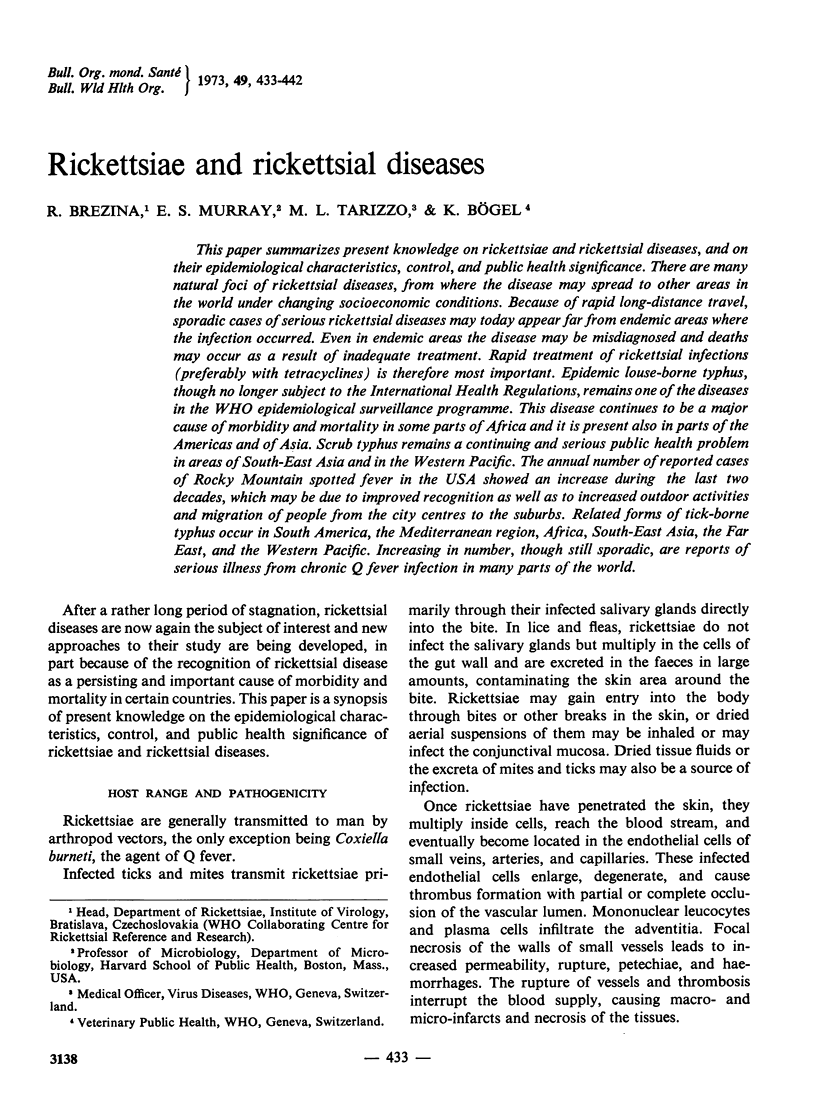
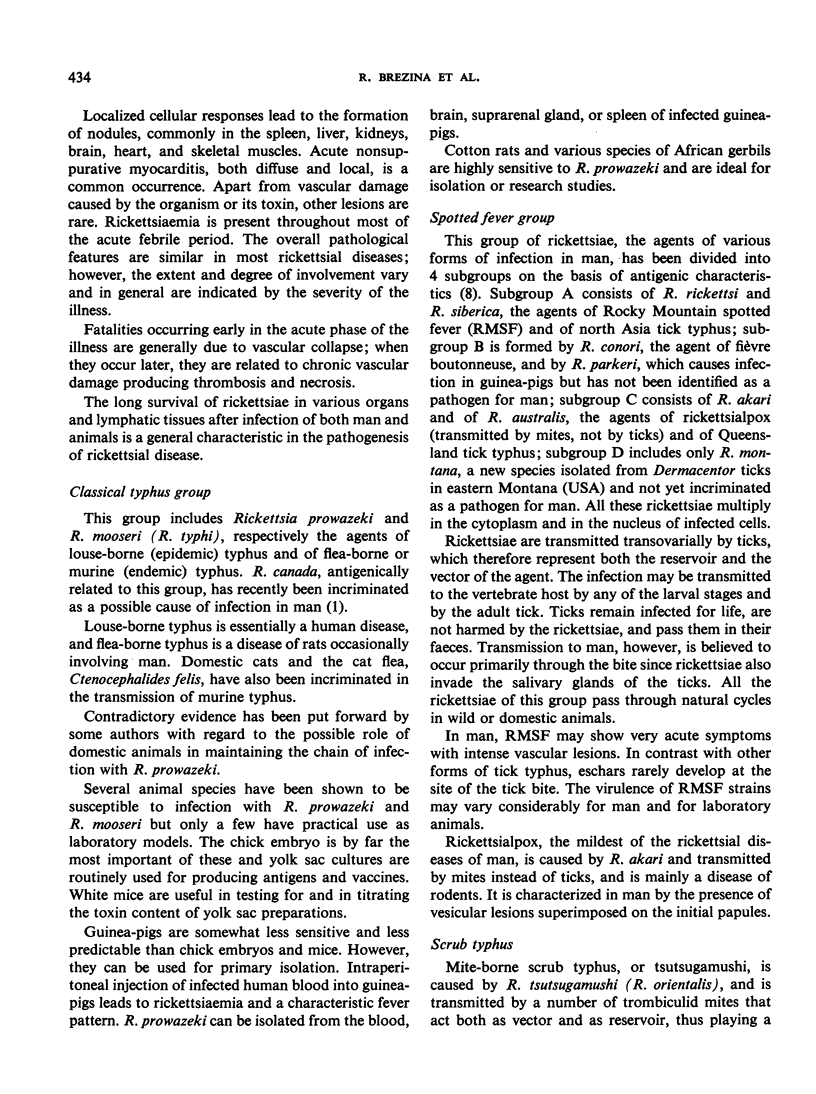
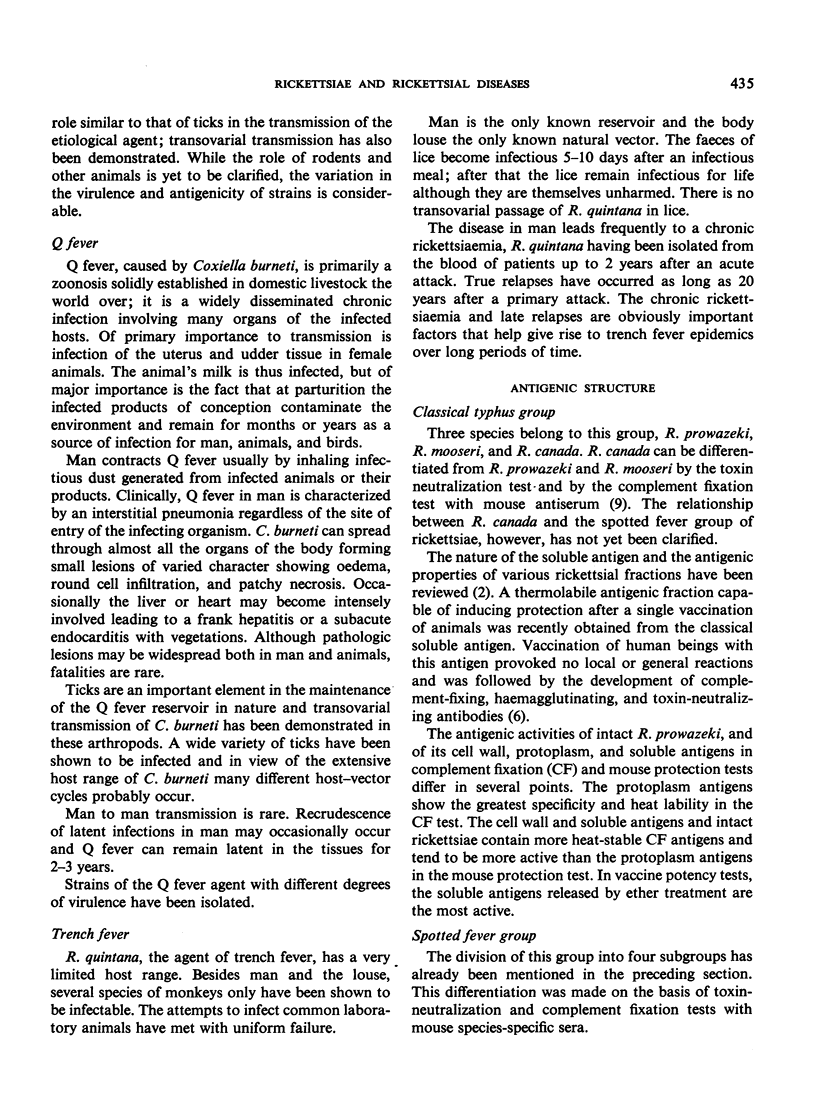
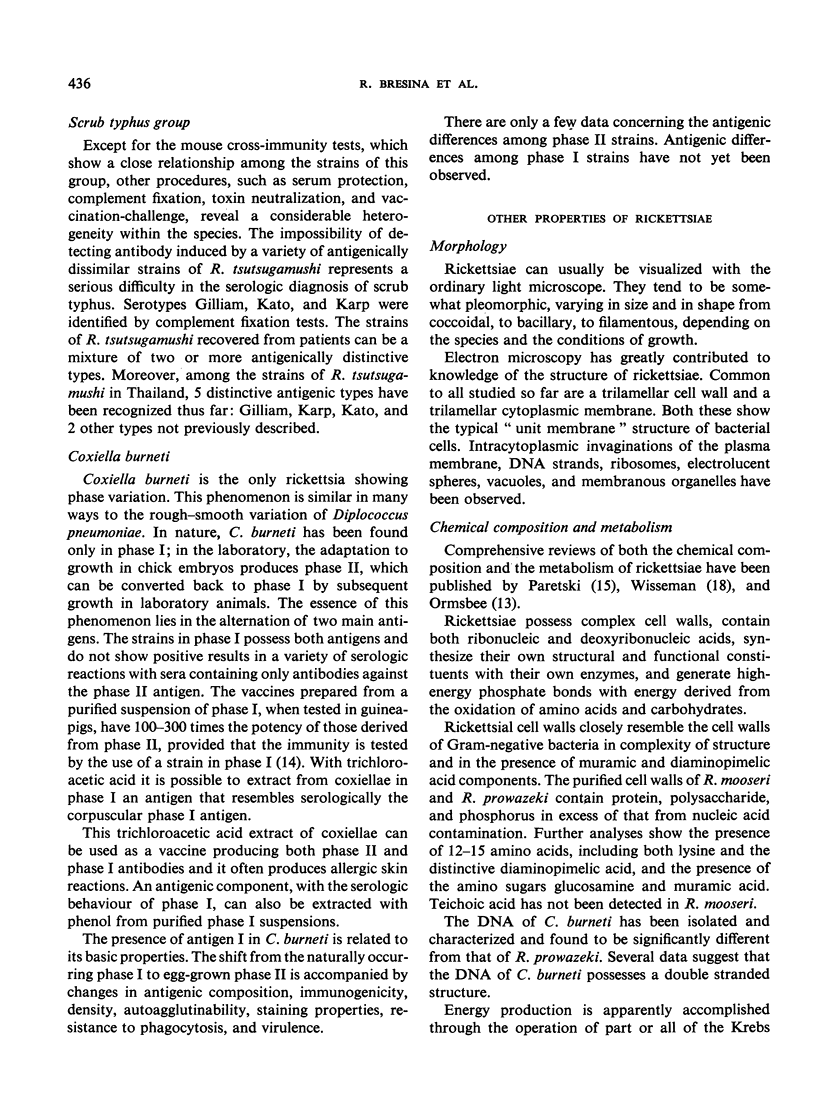
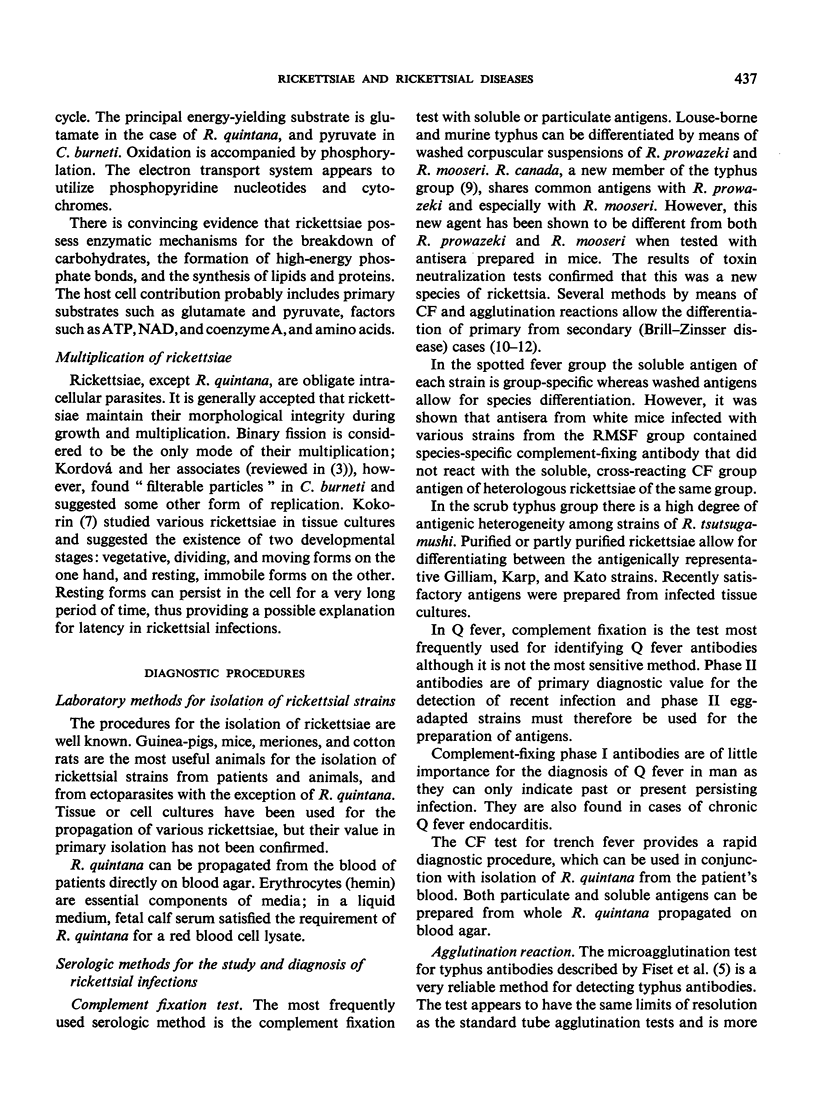
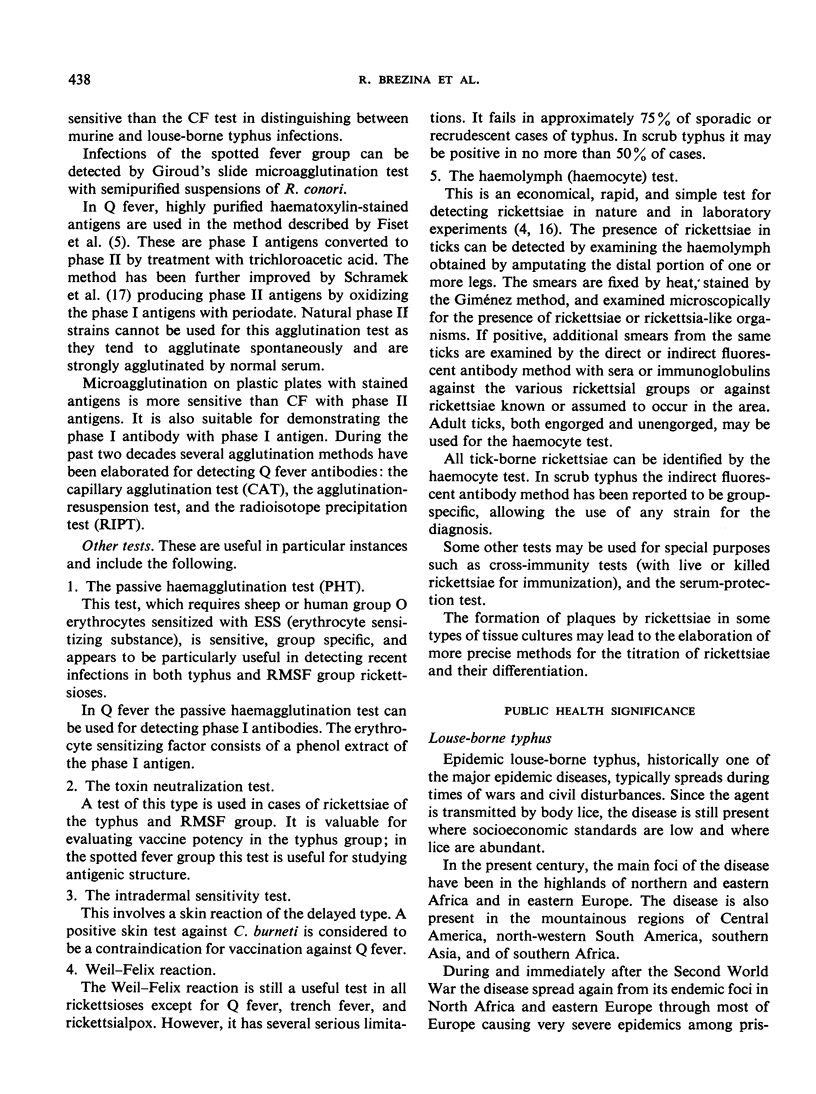
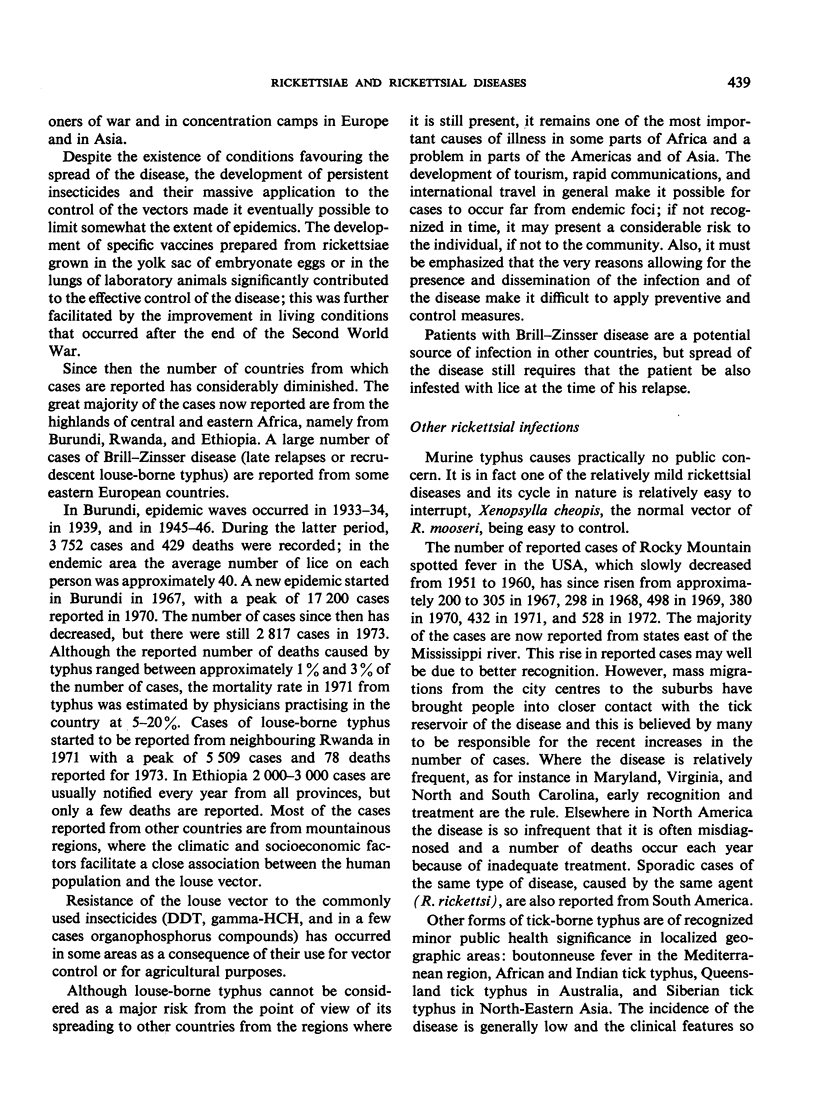
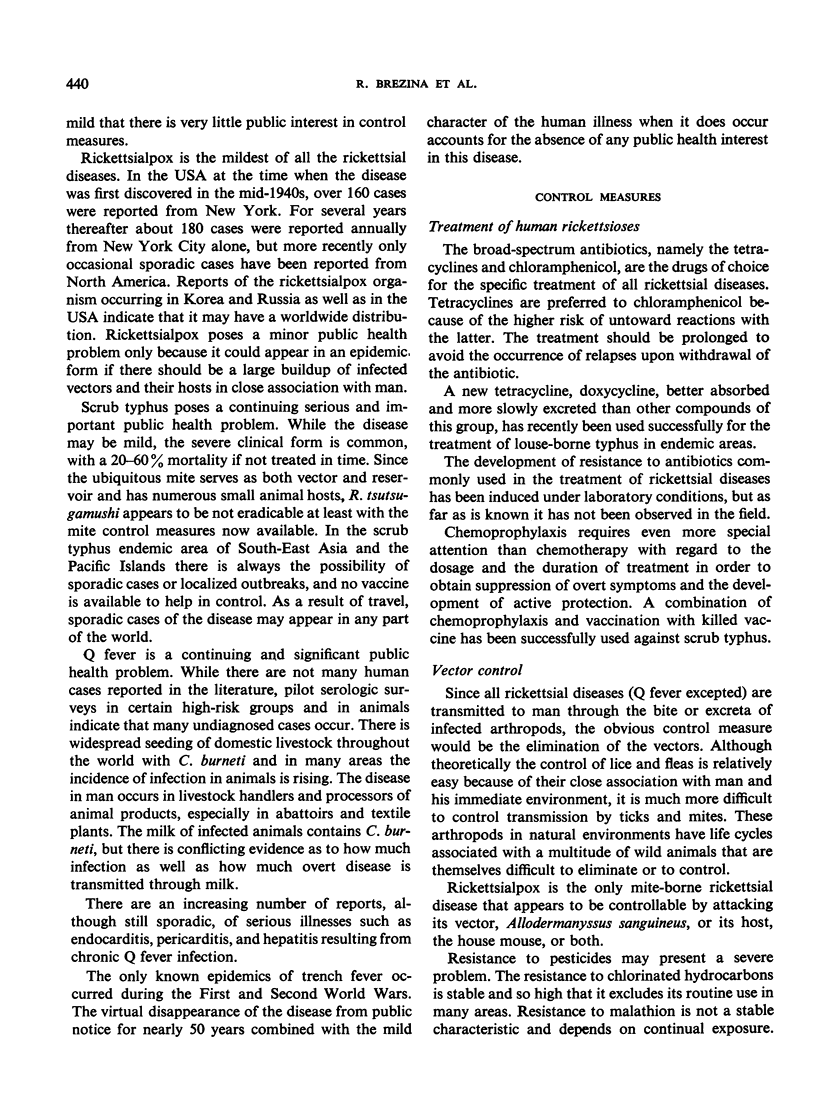
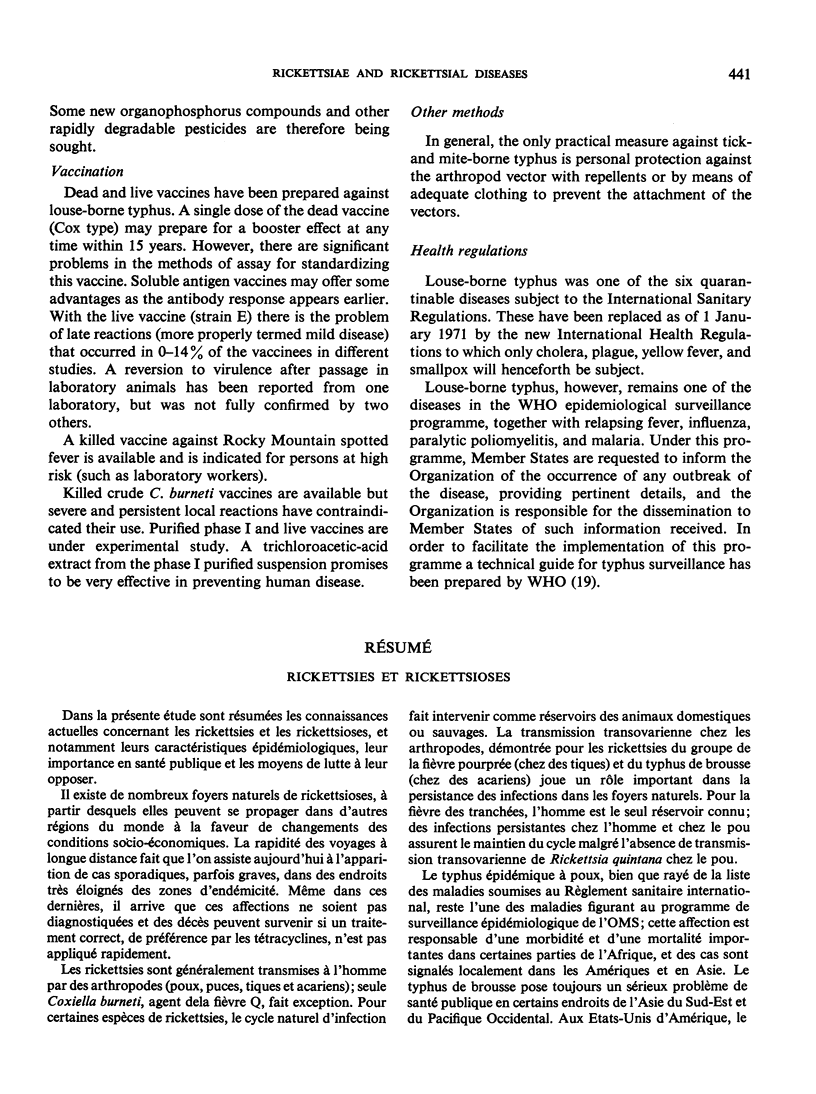
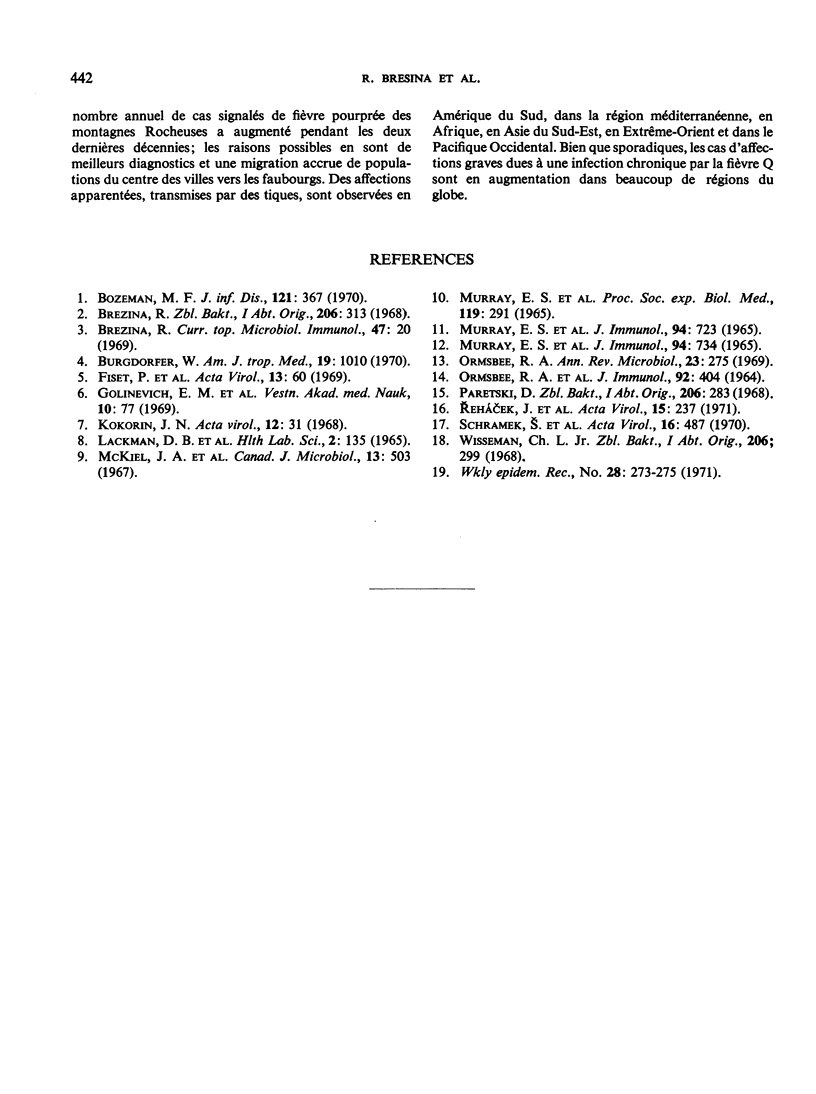
Selected References
These references are in PubMed. This may not be the complete list of references from this article.
- Bozeman F. M., Elisberg B. L., Humphries J. W., Runcik K., Palmer D. B., Jr Serologic evidence of Rickettsia canada infection of man. J Infect Dis. 1970 Apr;121(4):367–371. doi: 10.1093/infdis/121.4.367. [DOI] [PubMed] [Google Scholar]
- Brezina R. New advances in the study of rickettsial antigens. Zentralbl Bakteriol Orig. 1968 Apr;206(3):313–321. [PubMed] [Google Scholar]
- Burgdorfer W. Hemolymph test. A technique for detection of rickettsiae in ticks. Am J Trop Med Hyg. 1970 Nov;19(6):1010–1014. [PubMed] [Google Scholar]
- LACKMAN D. B., BELL E. J., STOENNER H. G., PICKENS E. G. THE ROCKY MOUNTAIN SPOTTED FEVER GROUP OF RICKETTSIAS. Health Lab Sci. 1965 Jul;2:135–141. [PubMed] [Google Scholar]
- MURRAY E. S., O'CONNOR J. M., GAON J. A. DIFFERENTIATION OF 19S AND 7S COMPLEMENT FIXING ANTIBODIES IN PRIMARY VERSUS RECRUDESCENT TYPHUS BY EITHER ETHANETHIOL OR HEAT. Proc Soc Exp Biol Med. 1965 May;119:291–297. doi: 10.3181/00379727-119-30161. [DOI] [PubMed] [Google Scholar]
- MURRAY E. S., O'CONNOR J. M., GAON J. A. SEROLOGIC STUDIES OF PRIMARY EPIDEMIC TYPHUS AND RECRUDESCENT TYPHUS (BRILL-ZINSSER DISEASE). II. DIFFERENCES IN IMMUNOELECTROPHORETIC PATTERNS, RESPONSE TO 2-MERCAPTOETHANOL AND RELATIONSHIPS TO 19 S AND 7 S ANTIBODIES. J Immunol. 1965 May;94:734–740. [PubMed] [Google Scholar]
- McKiel J. A., Bell E. J., Lackman D. B. Rickettsia canada: a new member of the typhus group of rickettsiae isolated from Haemaphysalis leporispalustris ticks in Canada. Can J Microbiol. 1967 May;13(5):503–510. doi: 10.1139/m67-065. [DOI] [PubMed] [Google Scholar]
- ORMSBEE R. A., BELL E. J., LACKMAN D. B., TALLENT G. THE INFLUENCE OF PHASE ON THE PROTECTIVE POTENCY OF Q FEVER VACCINE. J Immunol. 1964 Mar;92:404–412. [PubMed] [Google Scholar]
- Ormsbee R. A. Rickettsiae (as organisms). Annu Rev Microbiol. 1969;23:275–292. doi: 10.1146/annurev.mi.23.100169.001423. [DOI] [PubMed] [Google Scholar]
- Schramek S., Brezina R., Urvölgyi J. A new method of preparing diagnostic Q fever antigen. Acta Virol. 1972 Nov;16(6):487–492. [PubMed] [Google Scholar]
- Wisseman C. L., Jr Some biological properties of rickettsiae pathogenic for man. Zentralbl Bakteriol Orig. 1968 Apr;206(3):299–313. [PubMed] [Google Scholar]


